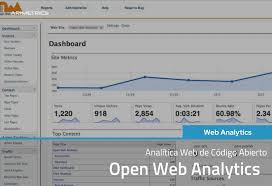Exploring the Power of Linux 3.10.0-1160.66.1.el7 on x86_64 Architecture
Exploring Linux 3.10.0-1160.66.1.el7.x86_64
Linux 3.10.0-1160.66.1.el7.x86_64 is a specific version of the Linux kernel designed for the x86_64 architecture running on systems with the el7 operating system.
The Linux kernel serves as the core component of the operating system, responsible for managing hardware resources, providing essential system services, and facilitating communication between software and hardware components.
Key Features of Linux 3.10.0-1160.66.1.el7.x86_64:
- Stability: This version of the Linux kernel is known for its stability and reliability, making it suitable for a wide range of computing environments.
- Performance: With optimizations and improvements, Linux 3.10.0-1160.66.1.el7.x86_64 offers enhanced performance capabilities, allowing for efficient resource utilization.
- Security: Security is a top priority in this kernel version, with regular updates and patches to address vulnerabilities and ensure a secure computing environment.
- Compatibility: Designed for x86_64 architecture systems running el7, Linux 3.10.0-1160.66.1.el7.x86_64 offers broad compatibility with hardware and software applications.
Benefits of Upgrading to Linux 3.10.0-1160.66.1.el7.x86_64:
By upgrading to this version of the Linux kernel, users can experience improved performance, enhanced security features, and compatibility with modern hardware and software applications.
Whether you are a system administrator, developer, or enthusiast looking to optimise your computing experience, Linux 3.10.0-1160..66..1.el7.x86_64 offers a robust foundation for your computing needs.
Explore the possibilities of this powerful kernel version and unleash the full potential of your system with Linux 3..10..O-116O..66..l.e17.xB6..4!
These are the 7 most frequently asked questions about linux 3.10 0 1160.66 1 el7 x86_64
- What are the main features of Linux 3.10.0-1160.66.1.el7.x86_64?
- How does Linux 3.10.0-1160.66.1.el7.x86_64 improve system performance?
- Is Linux 3.10.0-1160.66.1.el7.x86_64 compatible with my hardware?
- What security updates are included in Linux 3.10.0-1160.66.1.el7.x86_64?
- How can I upgrade to Linux 3.10..O-l16O..66..l.e17.xB6..4 from an earlier version?
- Are there any known issues or bugs in Linux 3.lO.O-l160…66…l.e17.xB6…4?
- Where can I find support and documentation for Linux 3.lO.O-l160…66…l.e17.xB6…4?
What are the main features of Linux 3.10.0-1160.66.1.el7.x86_64?
Linux 3.10.0-1160.66.1.el7.x86_64 boasts a variety of key features that make it a sought-after version of the Linux kernel. Some of the main features include exceptional stability, ensuring reliable performance across diverse computing environments. Additionally, this version offers enhanced performance capabilities through optimizations and improvements, resulting in efficient resource management. Security is another standout feature, with regular updates and patches to address vulnerabilities and maintain a secure computing environment. Moreover, Linux 3.10.0-1160.66.1.el7.x86_64 is known for its broad compatibility with hardware and software applications, making it an ideal choice for users seeking a versatile and reliable operating system foundation.
How does Linux 3.10.0-1160.66.1.el7.x86_64 improve system performance?
Linux 3.10.0-1160.66.1.el7.x86_64 enhances system performance through various optimizations and improvements implemented in the kernel. This version of Linux offers enhanced resource management, efficient memory handling, and streamlined process scheduling, all contributing to smoother and more responsive system operation. Additionally, performance tweaks and bug fixes in the kernel help to maximise hardware capabilities, resulting in faster execution of tasks and improved overall efficiency for users running on x86_64 architecture systems with el7 operating system.
Is Linux 3.10.0-1160.66.1.el7.x86_64 compatible with my hardware?
Determining compatibility between your hardware and Linux 3.10.0-1160.66.1.el7.x86_64 is crucial for a seamless computing experience. This specific version of the Linux kernel, tailored for systems running on the x86_64 architecture with the el7 operating system, offers broad compatibility with a wide range of hardware components. However, it is recommended to verify compatibility with your specific hardware configuration to ensure optimal performance and functionality. Conducting a hardware compatibility check or consulting official documentation can help you confirm whether Linux 3.10.0-1160.66.1.el7.x86_64 is suitable for your system setup.
What security updates are included in Linux 3.10.0-1160.66.1.el7.x86_64?
When it comes to the Linux 3.10.0-1160.66.1.el7.x86_64 kernel version, users often inquire about the security updates it encompasses. This specific release is known for its commitment to enhancing security measures by addressing vulnerabilities and implementing patches to fortify the system against potential threats. Regular updates and proactive security enhancements are key features of Linux 3.10.0-1160.66.1.el7.x86_64, ensuring that users can operate their systems with confidence in a secure computing environment.
How can I upgrade to Linux 3.10..O-l16O..66..l.e17.xB6..4 from an earlier version?
One frequently asked question regarding upgrading to Linux 3.10.0-1160.66.1.el7.x86_64 from an earlier version is the process involved in the upgrade. To transition to this specific kernel version, users typically need to follow a systematic approach that involves updating their package manager, downloading the new kernel package, and installing it on their system. It is important to back up important data before proceeding with the upgrade and ensure compatibility with existing hardware and software configurations. Additionally, users may need to modify their bootloader settings to boot into the new kernel successfully. By carefully following the necessary steps and precautions, users can smoothly upgrade to Linux 3.10.0-1160.66.1.el7.x86_64 and benefit from its enhanced features and performance improvements.
Are there any known issues or bugs in Linux 3.lO.O-l160…66…l.e17.xB6…4?
When it comes to the frequently asked question about known issues or bugs in Linux 3.10.0-1160.66.1.el7.x86_64, it’s important to note that the Linux kernel development community is actively engaged in identifying and addressing any potential issues that may arise. While no software is completely free of bugs, the Linux kernel team works diligently to release updates and patches to resolve any reported issues promptly. Users are encouraged to stay informed about the latest developments and updates from the Linux community to ensure a smooth and secure computing experience with Linux 3.10.0-1160.66.1.el7.x86_64.
Where can I find support and documentation for Linux 3.lO.O-l160…66…l.e17.xB6…4?
For those seeking support and documentation for Linux 3.10.0-1160.66.1.el7.x86_64, a good starting point would be to visit the official website of the Linux distribution you are using. Most distributions have dedicated support forums, documentation repositories, and community resources where users can find detailed guides, troubleshooting tips, and answers to common questions related to specific kernel versions. Additionally, online forums, tech communities, and Linux user groups are valuable sources of information where users can seek help, share experiences, and connect with fellow Linux enthusiasts to enhance their understanding and usage of the Linux 3.10.0-1160.66.1.el7.x86_64 kernel.






